Taipei 101 is a modern skyscraper located in Taipei, Taiwan in the busy Xinyi District. It was formerly known as the Taipei World Financial Center before being renamed into the TAIPEI 101- a name we know of today. The landmark is a mixed-use building with an MRT metro station located right at its basement. It sits on a mall establishment offering commercial shopping and dining options. The tower itself serves as residential accommodations, offices and an observation deck spanning the 88th through 91st floors.
The 101-story landmark topped with an antenna spire at the top was the world’s tallest in 2004 as crowned by the Guinness world records until being overtaken by Burj Khalifa in Dubai in 2009. The observation deck itself is served by its own high-speed elevator shuttling passengers up to speed of 60.6 km/hr directly to the 88th floor indoor observatory deck entrance. The public accessible deck spans 4 floors with an outdoor observatory deck on the 91st floor.
Day and Night combined panoramic views from the observation deck.
The observation deck follows pretty much a linear route, where you are free to roam about the outdoor and indoor observation decks across all 4 floors. Exit to the indoor observation deck brings your through several interactive exhibits explaining the engineering behind the building you are on. There is even a post office at the attraction gift shop, where you can send mails from Taiwan’s highest post box right on the Taipei 101 itself. The exhibits then exit into a gift shop at the upper floors where you can take another elevator back down to the ground floor.
Building Engineering Marvel
The real marvel of the Taipei 101 is not only just its height, but the amount of engineering which goes into making it one of the most resilient structures ever built by man. The tower has to withstand gale-force typhoon winds during the Taiwan annual monsoon season (up to 7 tons of sustained wind impact), as well as withstand earthquakes in a seismically-active region.
Taipei 101 has this characteristically blue-green glass curtain walls which many say looks like a shade of bamboo. This, coupled with the uniquely Asian “pagoda-stepped” exterior architecture of the buildings does make it a uniquely distinguishable Asian landmark which the people of Taiwan are so fond of. The windows are double paned and glazed, offer heat and UV protection, reducing heat transfer by 50%, saving power.
Much of the building’s earthquake resiliency is achieved through a variety of engineering marvels, such as decoupling of the ground and building foundations, so as to minimize the ground to building transmission of energy. The use of a highly flexible building structure which allows for large amount of energy dissipation of earthquake and wind energy to carefully designed aerodynamic windows so as to safely channel wind energy around and not forced on the building.
The use of tuned mass dampers (TMD), with the largest of them all being a 660 ton steel ball located between the 87th and 91st floor made of several solid plates bolted together to achieve the desired weight. The mass is coupled to the building using active dampers (not rigidly mounted) to provide strong critical dampening to the building in the event of earthquakes or aftershocks. This is accomplished through the ball, with its own inertia opposing any swaying movements of the tower in strong winds and earthquakes in the opposite direction, thus keeping destructive oscillations low. This is true for the majority of measured earthquake patterns unique to the region and soil conditions.
You are good for about 2 hours for a typical visit. It is recommend visiting the deck about 30-60mins before the estimated sunset timing for the day, giving at least 30 minutes for ticketing and queues to ride the elevator to the viewing deck. Entry tickets to the observation deck cost NT$500 per adult. There is no time limit to how long you can stay up at the observation deck.
View more photos of Taipei 101 here.

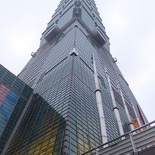
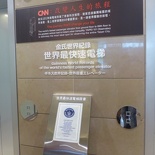
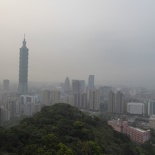
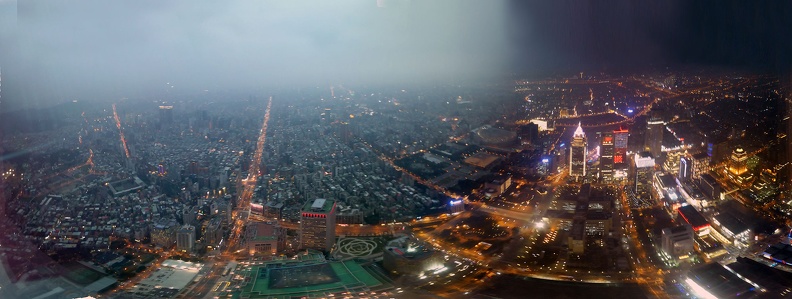
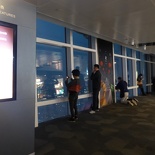
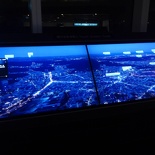
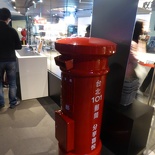
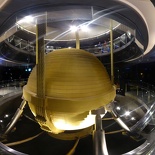
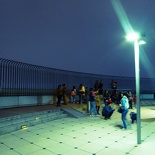
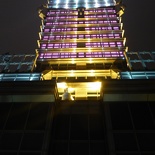
[…] Kingdom, China and Singapore. They are managed by Taster Food Pte Ltd. Notably, we saw one at the Tapiei 101 on our trip to Taipei too. Additionally, I had dined at Din Tai Fung on a couple of occasions, but […]